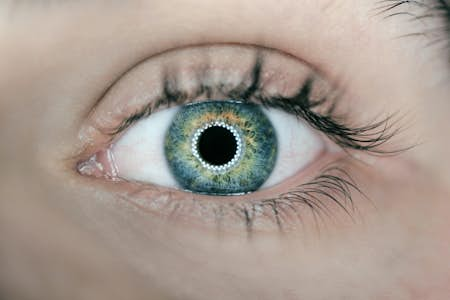One in four adults in the UK is short-sighted, with a high proportion of those affected in the older age groups. Fortunately, many options are available to treat this common eye condition, even if you also have other eye problems.
What is short-sightedness?
Short-sightedness, also called myopia or near-sightedness, is an eye condition where distant objects are challenging to see and appear blurred. This might cause you to squint to better discern what you are looking at, a telltale sign of myopia. However, close objects remain easy to see as short-sightedness affects your distance vision.
Vision correction is possible with contact lenses or glasses, although there are other permanent corrective options like laser eye surgery.
What process occurs within the eyes to cause short-sightedness?
The anatomy of the eye contributes to short-sightedness to some degree, which explains why this eye condition can run in families. A longer than average eyeball or a cornea which is too curved, sometimes a combination of both factors, causes light to concentrate in front of the retina rather than directly on the retina. Consequently, the image sent to the brain of distant objects is blurred.
Opticians classify short-sightedness as mild, moderate, severe or high myopia.
Although the shape of the eye can cause short-sightedness, which is why it can also be present in young children, age is the most common factor in myopia development. This is because the growth of the eye is at its peak during puberty and the length of the eye tends to increase as the level of myopia increases.
Factors which affect myopia
Apart from age, one of the most significant impacts on short-sightedness is screen use and close-up work on papers or small devices like phones and tablets, which causes eyestrain. Cataracts and diabetes are also a factor.
Good eye care is essential, and if you do regular work on documents or in front of a screen, then protective eye measures like plenty of breaks and good lighting will help preserve your eyesight, as will using eye drops if your eyes become dry.
Symptoms of myopia
Short-sightedness is easy to assess, and most people are aware they suffer from it before they have an eye test. In young children, it may be less easy to spot, but symptoms typically include difficulty reading words on the whiteboard at school, sitting too close to the television at home, frequently rubbing the eyes and complaining of headaches.
Non-surgical treatment options for myopia
Vision correction is achieved using contact lenses (called negative lenses) or glasses. Your optician or ophthalmologist will assess your vision during an eye test with the classic letters board on the wall. If you are short-sighted, it is vital to have regular eye tests as the condition can change, which could lead to an adjustment to your prescription.
Myopia can also be treated with Orthokeratology (or Ortho K). The patient wears rigid contact lenses overnight, flattening the cornea and depriving it of oxygen. With less oxygen supplied by the blood vessels, the tissues in the cornea begin to swell, creating a change in shape. This reduces myopia, but the effect of wearing rigid lenses only lasts for a couple of days.
Surgical treatments
There are different surgical treatments for short-sightedness, but whether they are suitable depends upon factors individual to the patient, including age, myopia level, and the presence of other eye conditions or eye problems like macular degeneration and glaucoma. Here are some of the options.
1. Laser Eye Surgery
This process uses lasers to change the shape of the cornea altering the way light is focused on the eye and removing the need for corrective contact lenses or glasses. This correction is permanent. There are different types of corrective surgeries, including Lasik and Lasek.
2. Lens Implant Surgery
This surgery implants a special contact lens into the back of the cornea for permanent vision correction. This procedure is an option for those whose eye health makes laser eye surgery inadvisable or who suffer from dry eye or very high levels of myopia.
3. Clear Lens Extraction
Clear lens extraction is actually a process developed to remove cataracts but is also used to treat myopia and hyperopia, which is long-sightedness. This is also known as refractive lens exchange or refractive surgery and is mostly used for patients over 45.
Clear lens replacement surgery takes around 15 minutes and is usually performed on a day surgery basis. The manmade intraocular lens replaces the natural lens and changes the eye's focusing power. It is similar to cataract surgery, although the latter replaces a cloudy lens. Special diagnostic equipment is used to assess the eye for the correct lens power based on age, lifestyle and activities.








